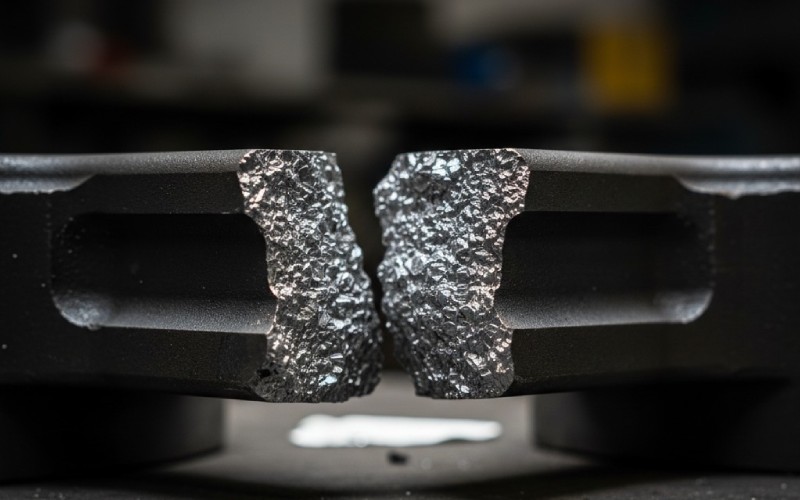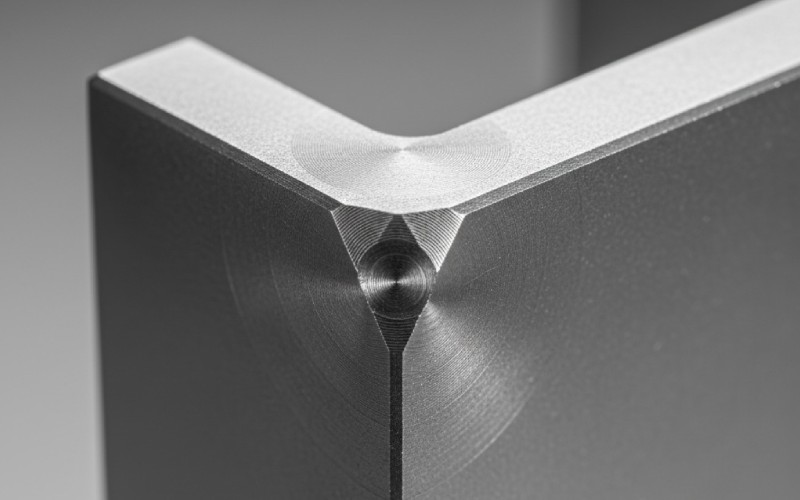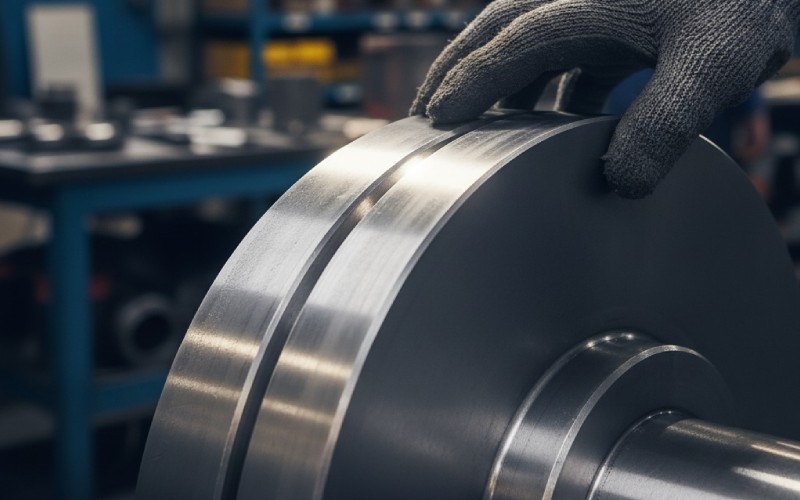Biarkan Istar membantu Anda memulai proyek Anda dengan pengalaman dan pengetahuan kami!
Unggah file desain dan persyaratan produksi Anda dan kami akan menghubungi Anda dalam waktu 30 menit!

I have worked with machine parts for many years. I have seen them break in very bad ways. One of the main reasons machine parts break is due to something we call a stress concentration. You can think of it as a hidden weak point in a part. These points can make a part crack and fail, even when it is being used normally. This can be a big danger and cost a lot of money. In this article, I plan to show you what I have learned. I will teach you how to spot these weak points in your designs. I will also give you simple, easy-to-use ways to remove them. By reading this, you can learn to make your parts stronger, safer, and able to last a lot longer.
Let’s begin with a simple idea, which is stress. When you apply a push or a pull to a part, there are forces working inside of it. We call these inside forces stress. Now, picture this stress moving through the part just like water flowing in a river. If the river is straight and has smooth banks, the water will flow in an even way. The stress is also even. But what if you place a large, sharp rock in the river’s path? The water must quickly flow around that rock. The flow is not even anymore. This is just what happens with stress.
Stress concentration is just a spot in a part where stress starts to build up. This happens because of the part’s shape, which we call its geometry. Things like sharp corners, holes, or a notch are very much like those rocks in the river. They are a break or a sudden change in the shape. These uneven shapes interrupt the smooth flow of stress. The stress must find a way around them. When it does, it gets much stronger in that one little area. This very high stress can cause failure. This is true even if the stress in the rest of the part is very low. Knowing this is the first step toward making stronger and better parts. The build-up of stress is a big problem.
So, we understand that stress can build up. But just how much does it build up? For that, we use a special number. It is called the stress concentration factor. I often see it written down as “Kt”. This number is very, very important. It shows us how many times greater the stress is at the weak point when we compare it to the normal stress in the rest of the part. It’s a simple comparison of the highest stress to the normal, or nominal, stress.
Let’s imagine a part has a normal stress of 100 units. But, it has a sharp corner where the stress concentration factor is 3. This tells us the maximum stress at that corner is really 300 units (100 multiplied by 3). That is a very large increase in stress! The stress concentration factor is a pure number. This means it has no units like inches or pounds attached to it. It just makes the stress bigger. For a sharp corner or a small crack, the stress concentration factor can become incredibly large. This shows you how a tiny crack can be so dangerous. This extra stress is the thing we need to control.
Now, we should talk about the real world. What happens when stress becomes too strong in one spot? The answer is, bad things happen. The results of stress concentration are quite serious. The most common issue is that it can start a crack. A very small crack begins in the area with the highest stress. This stress is powerful. Once a crack begins, it can grow very fast. This often leads to an early failure of the entire part. The stress pushes the crack to grow.
This issue gets even worse when a part is under cyclic loading. Cyclic loading just means the stress goes on and off, again and again. You can see this in a car engine part or an airplane wing. A part that has stress put on it over and over can get tired. We call this process fatigue. A spot with high stress is where a fatigue crack will start to form. This can cause a fatigue failure to happen much sooner than you think. In the worst situation, this crack can cause a complete and sudden failure. This is why we must reduce stress concentrations. It will help increase the fatigue life and make our designs more dependable. The high stress will lead to early failure.
Over time, I’ve learned where to find these problem areas. A high stress concentration is often hiding where you can easily see it. These spots are caused by sudden changes in the part’s geometry. Just think about where the shape of your part changes in a hurry. These breaks in the shape are where stress will collect. These parts of the design act as a stress raiser. This stress raiser makes the stress much stronger.
Here are some of the most common places to find a stress riser that makes stress stronger:
Yes, you certainly can! This is the best and simplest way to solve the problem. The main goal is to lessen the high stress. We want to make the path for the stress much smoother. We can do this by making changes to the geometry of the part. You can minimize stress concentrations by making simple changes to the design. The most important rule to follow is: do not use sudden shape changes. Try to make every change in the part’s shape as slow and smooth as you can. This will give you lower stress.
Instead of using a sharp corner, you should use a corner that is rounded. This rounded corner is known as a fillet. A fillet that has a smooth curve, or a large radius, allows the stress to flow in a gentle way. A bigger radius helps to spread the stress out over a bigger spot. This brings down the highest stress and makes the part a lot stronger. We must lessen this stress. Good geometry is very important for controlling stress.
| Fitur | Stress Concentration |
|---|---|
| Sharp Corner | Very High Stress |
| Small Radius Fillet | Medium Stress |
| Large Radius Fillet | Low Stress |
Let’s take a closer look at fillets. The size of the radius makes all the difference. A very small radius isn’t much better than using a sharp corner. A big radius, on the other hand, can greatly decrease the stress concentration factor and the nearby stress. You should always try to use the biggest radius that will fit in your design. This one simple change can make a huge improvement to the fatigue life of a part. The radius is your best friend when fighting stress. The stress will be much lower.
Now, what should we do about a notch? I said before that a notch is a source of stress. However, we can also use them to our benefit. We can add special relief notches. Let’s say you have a shaft with a sharp step, and it is causing high stress. You can cut a smooth, rounded notch (a relief notch) right beside it. This new, smoother notch becomes the point of highest stress. But because you designed it well, the stress concentration factor is much smaller. You are now telling the stress where to go. It’s a smart way to reduce stress concentrations and manage the stress inside a part.

The geometry of a part is the main reason for stress concentration. But the material selection is also very important. Different kinds of materials handle stress in different ways. Materials can be either ductile, which means they can bend, or they can be brittle, which means they snap. Ductile materials, like many types of steel and aluminum, can stretch a small amount before they break. This ability is a kind of deformation.
When a ductile material has a spot of very high stress, the material at that tiny point is able to stretch. This little bit of deformation helps to share the stress with the areas around it. It helps to “smooth out” the highest stress. This makes ductile materials better at handling stress concentrations, especially when there is just one steady load. A brittle material, like cast iron, is not like this. When the stress at a stress raiser becomes too great, a brittle material cannot bend. It just breaks. A crack will form and grow in an instant. This is why you must be very careful to minimize stress concentrations when you are working with brittle materials. So, material selection is very important for reliability.
A long time ago, we had to use books full of charts and do a lot of math to guess the stress concentration factor. This took a long time and was not always right. Today, we have a wonderful tool: computer simulation. The most common kind is called Finite Element Analysis, or FEA. I make use of FEA all the time. FEA has completely changed how we find and fix stress problems.
Using FEA software, you can make a 3D model of your part right on the computer. After that, you tell the software about the outside forces, which are the loads on the part. The FEA program then figures out the stress in every part of the structure. It displays the stress levels using a color map. Red is often used for the highest stress, while blue is used for low stress. You can see the problem spots right away. The sharp corners and holes will be colored red. This simulation can give you a better understanding of the stress. Then, you can test your fixes on the computer. You can change a radius and run the FEA simulation one more time. You will see the red spot get smaller and change to yellow or green. This lets you minimize stress before you even create a real part. This can save you a lot of time and money.
A design that looks perfect on the computer can still break if it is not made correctly. High-quality manufacturing is the last, very important step. Your design may show a nice, smooth fillet with a big radius. But if the way it’s made creates a sharp edge or a rough spot, you have a new stress problem.
Methods like Pemesinan CNC are wonderful because they are so exact. A CNC machine can cut a perfectly smooth radius that is just like your design. Other methods, such as injection molding for plastics, also require a careful design. Sharp corners are not good for injection molding because they make stress and can cause the part to get stuck in the mold. In sheet metal fabrication, you must be careful about how you bend the metal so you do not make tiny cracks. Even a small problem or flaw in the material can act like a stress riser. Bad weld quality can make a crack. High-quality manufacturing ensures that the part you receive is just as good as the part you designed. This stress must be kept low.

As I have shown, controlling stress is not about using just one special trick. It is a full process. It requires a mix of good design, smart material selection, modern simulation tools, and high-quality production. These are all ways to minimize stress. You can think of it as a team working together to fight stress.
First, you begin with good geometry. You design your part to have smooth curves and use the biggest possible radius you can at every corner. You lessen the stress from the very start. After that, you pick your material. If your part is going to have some stress risers that you cannot get rid of, maybe choosing a ductile material is a good idea. Then, you make use of FEA simulation to check over your work. The FEA will confirm that you do not have any hidden spots of high-stress. It lets you see the stress and any deformation. Last, you send your design to be made with a method like CNC machining or injection molding. These methods can create your smooth geometry with great accuracy. When all of these steps are done together, you make a part that is strong, dependable, and has a very long fatigue life. You have successfully controlled the stress in your design.